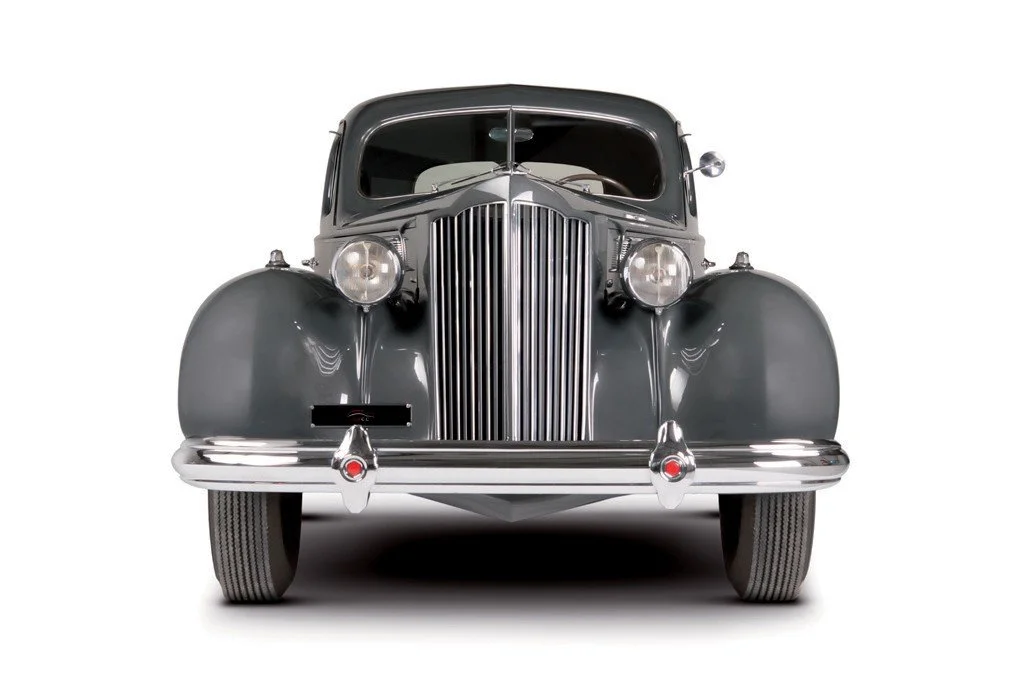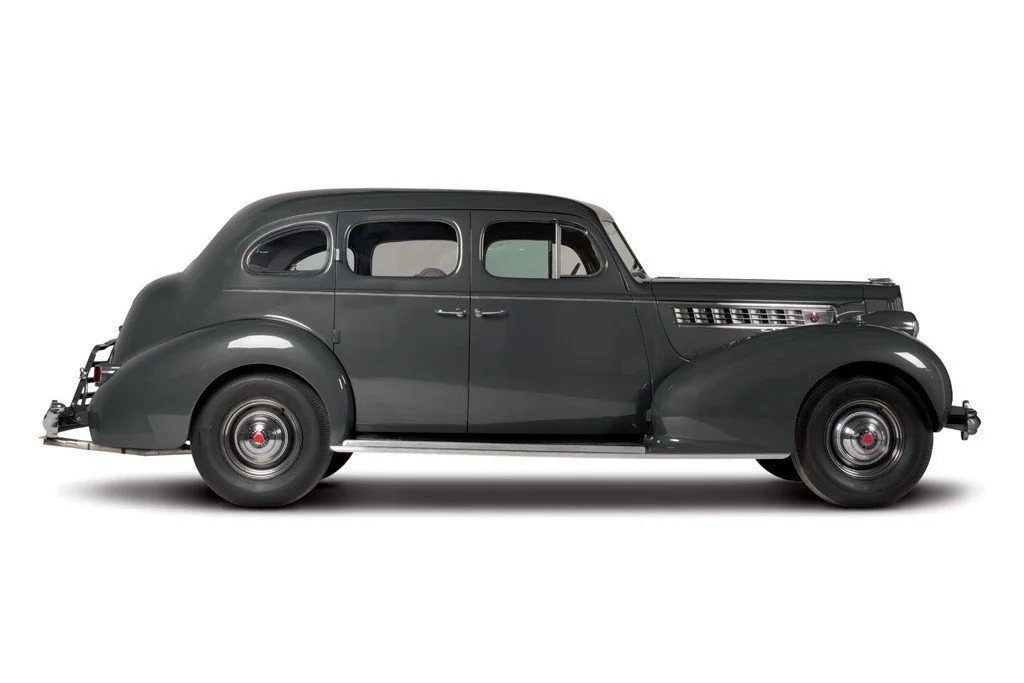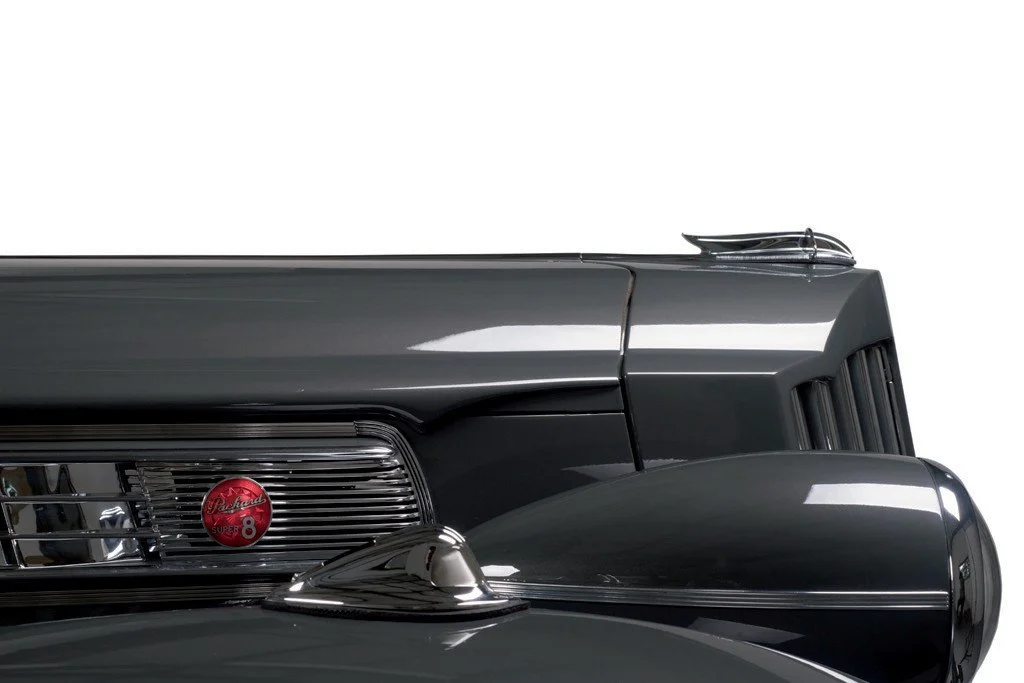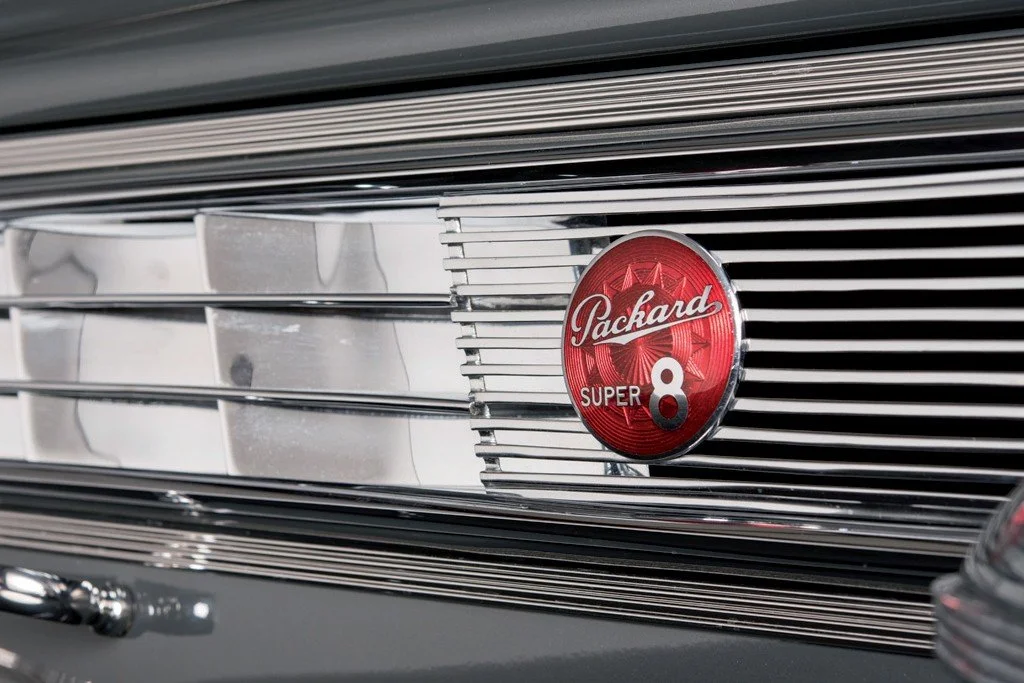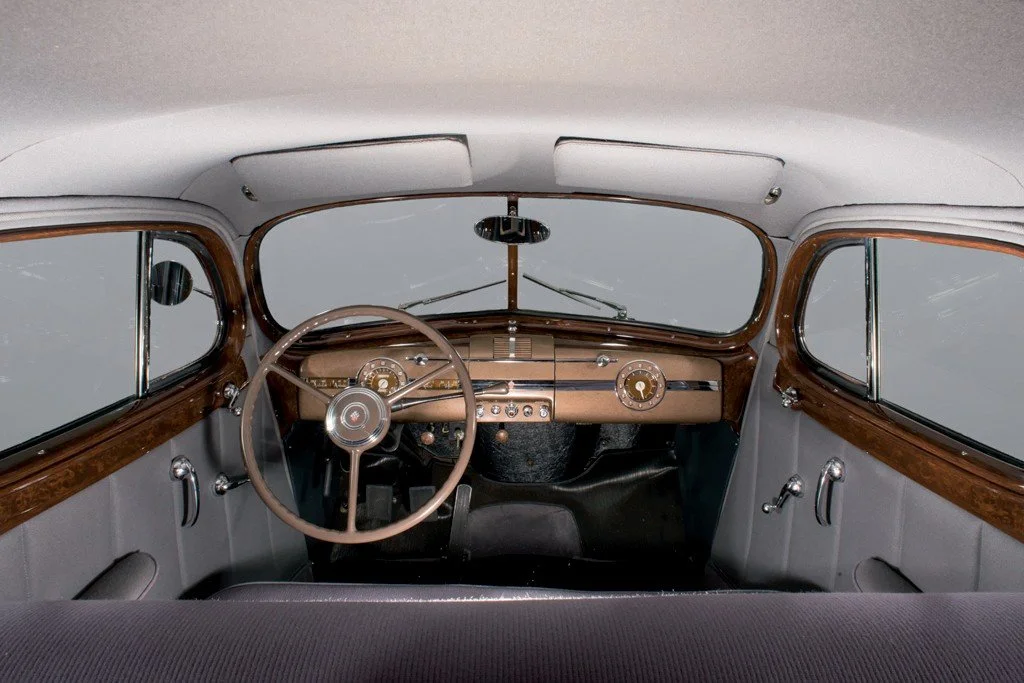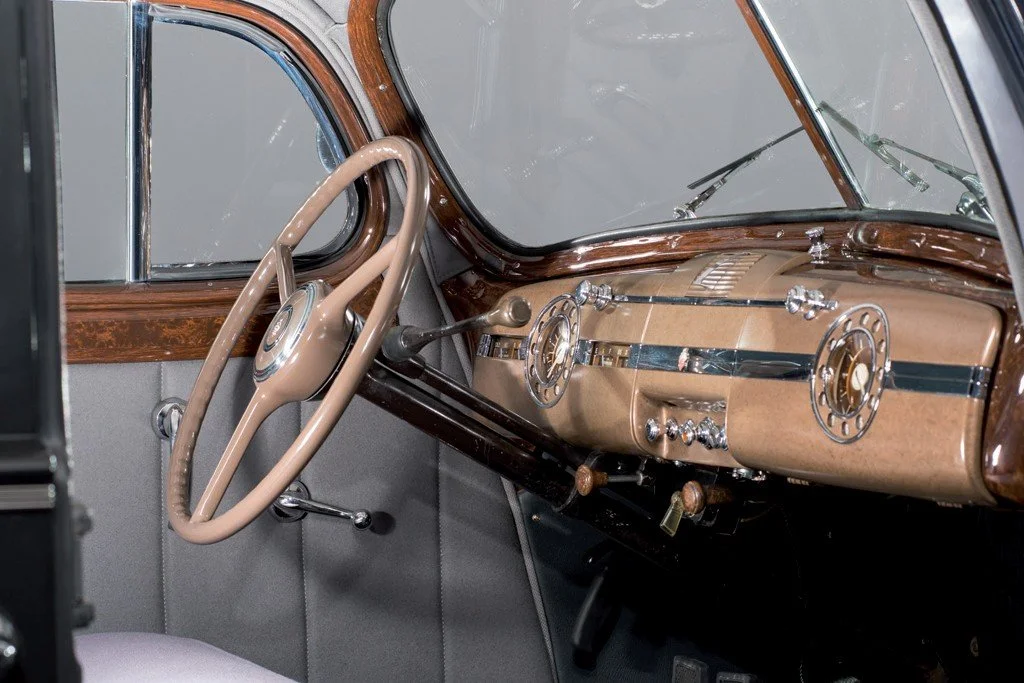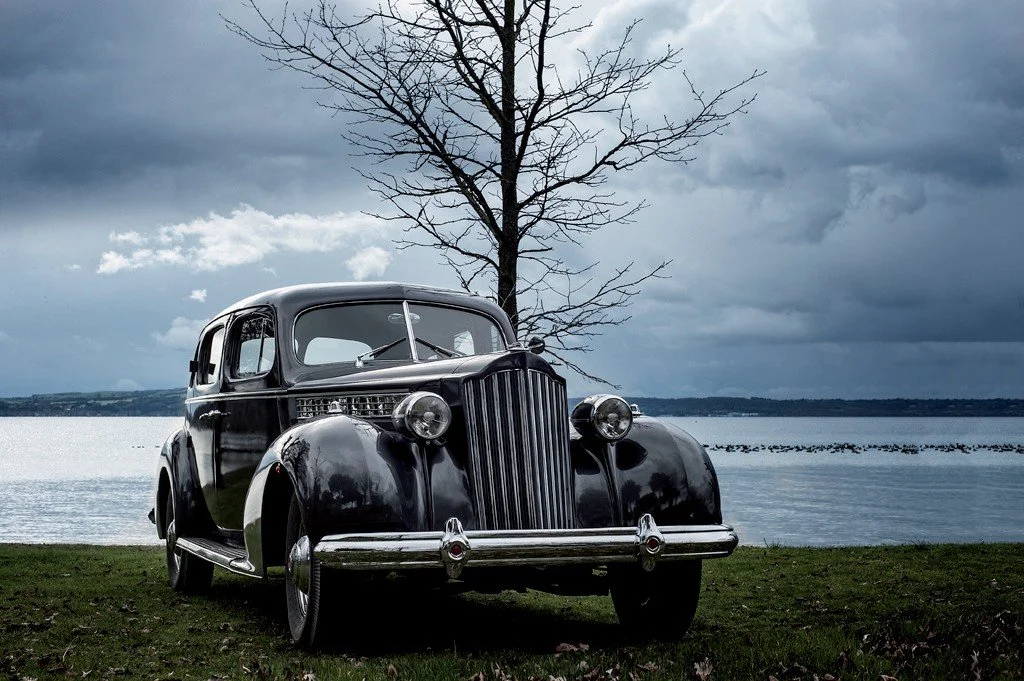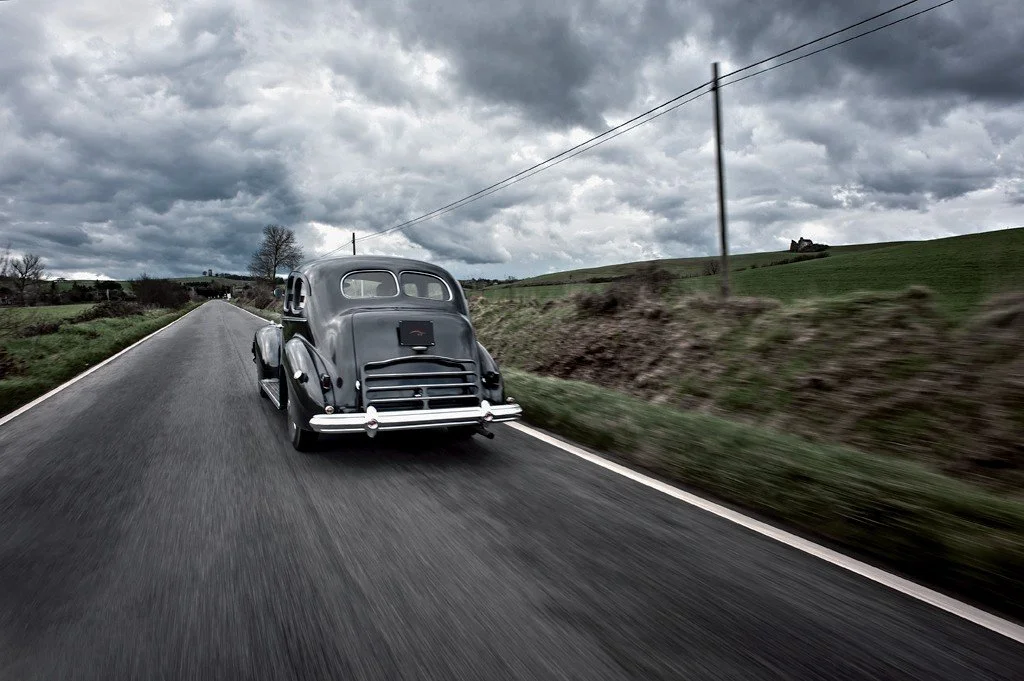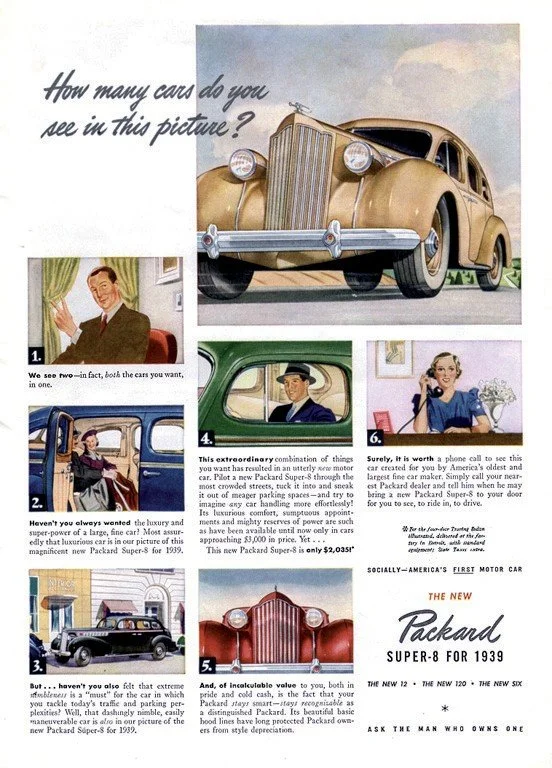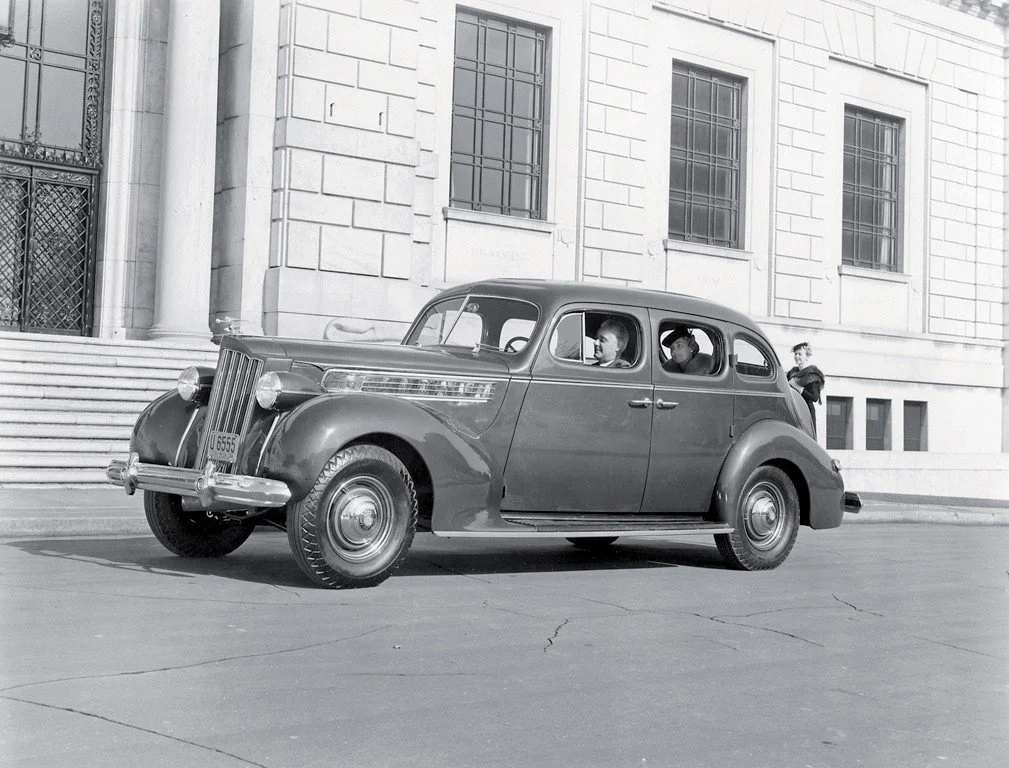-
This 1939 Packard Super Eight four-door sedan (Model 1272) was imported when new, as demonstrated by the kilometer speedometer. The earliest years of its life are unknown, but in the Fifties a car rental company for movies owned by the Cartocci brothers purchased the car. Subsequently the car starred in many movies, and the interior was altered in order to better suit its roles. A partition was installed behind the front seat, to make the sedan look like a limousine.
In 2013, the Nicola Bulgari Car Collection bought the car, with the plan of completely restoring it to original specifications. During the restoration performed by Carrozzeria Rizza, all the modifications were removed, and every part of the Packard was returned completely to its original state. The chassis was in good condition, so the body was removed and completely restored following the original specifications. The refinished body was painted in the original shade of Iridium Grey Poly (code S). The interior furnishings were restored by the Massenzi upholstery shop in original gray cloth, while the chrome parts were sent off to the United States to be re-chromed. A rare Packard created for export to Europe came back to life. -
Company
Packard Motor Car CompanyWheelbase
127inInterior trim
Gray clothBrakes
front and rear drumsMake
PackardLength
201inEngine
inline 8 - 320cidTires
7.00x16Model
Super Eight - Model 1272Width
76inCarburetor
1 Carter WDO 512 SOriginal Price
$1,732Body style
4-door SedanWeight
3725lbsHorsepower
130hp @ 3200rpmProduction
3,962Model year
1939Exterior paint
Iridium GreyTransmission
Synchro-shift 3-speed manual -
Luxury cars were still suffering in terms of sales in the late Thirties, nearly a decade after the stock market crash of 1929. Packard had miraculously survived an economic catastrophe that had buried many of its prestigious competitors. Packard, unlike Lincoln, Cadillac and LaSalle, had endured without the financial backing and development resources of a major automotive conglomerate. By 1937, such prestigious makes as Stutz, Peerless, Marmon, Duesenberg, and Auburn had disappeared, while Cord and Pierce Arrow were fading fast. Packard stood alone among the luxury brands. The company managed to reposition itself in the market, retaining its reputation for luxury and quality, but introducing models that were competitive in the med-upper section of the marketplace. The less expensive 120 series had retained the Packard quality with a price that was 50 percent lower than the senior models. It was a tremendous success, allowing buyers to acquire Packard quality at a low price. Thousands and thousands of buyers could finally afford a car bearing the Packard name. The company not only survived, but made money during the difficult years of the Thirties. Things were finally going well for Packard when the economic crisis of 1938 hurt the company pretty badly. It was not as bad in the early Thirties, but sales were cut in a half from the 1937 level of 50,000 cars.
A redesign and a series of improvements were introduced for the 1939 model year, and as a result, sales rebounded to over 46,000 units, a performance not surpassed until 1948. Sales were not at the 1937 level, but they were good enough to put the company back in the black. The Packard model lineup was called “Seventeenth Series” and was comprised of four series: the less expensive Six, accounting for about half of the total yearly sales, the 120, based on a 127 inch wheelbase, the Super Eight, on the same length wheelbase, but with a larger engine, and the luxurious custom-built Twelve, now in its final year. With an output of only 446 V12, Packard could not justify its survival, and decided to drop the line. This move allowed more assembly line space for the upcoming revolutionary Clipper, scheduled for debut in the 1941 model year.
The Super Eight line was now comprised of only six models on two wheelbases, 127 inches and 148 inches, down from fifteen in 1938. Gone were all the custom-built cars, a move justified by very low sales. The engine used by the Super Eight was a straight-eight with a 320 cubic inch displacement, which could generate 130 horsepower. In a cost-cutting move, a cast iron head took the place of the aluminum head of previous year. Differences between the cheaper and the upscale Super Eight were only in the drivetrain department, but visually they were very similar, since they used the same body and chassis. New for the year were the “No Roll” hill holder, to help the driver start from slippery surfaces, the gearshift lever on the steering column rather than on the floor, and the introduction of the “Econo-Drive”, a new overdrive that gave an extra ratio in the trans for better top speed.


